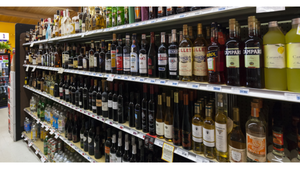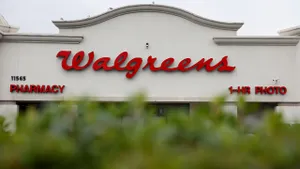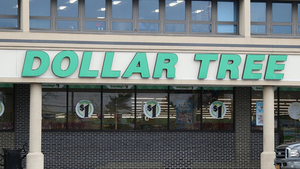KMART'S ANDERSON: FUTURE SUNNY FOR SUPERCENTERS
PALM BEACH, Fla. -- "Consumers are surfing channels to satisfy their shopping needs," said Laurence L. Anderson, president of Super Kmart and executive vice president of Kmart Corp. "Those who have caught the supercenter wave have found one-stop convenience and cross shopping as a major motivational reason for their conversion." Anderson, whose company now operates 99 supercenters, told the SN Food
November 9, 1998
DAVID ORGEL
PALM BEACH, Fla. -- "Consumers are surfing channels to satisfy their shopping needs," said Laurence L. Anderson, president of Super Kmart and executive vice president of Kmart Corp. "Those who have caught the supercenter wave have found one-stop convenience and cross shopping as a major motivational reason for their conversion." Anderson, whose company now operates 99 supercenters, told the SN Food Retailing Summit here that the future of his retailing channel seems bright. He said Kmart has learned from its merchandising mistakes in recent years and continues to fine-tune offerings in food and nonfood. The supercenters incorporate full perishables departments and grocery together with a wide-ranging general merchandise offering. The company is planning to expand in an environment that will be favorable for supercenters, Anderson said.
"The number of consumers who shop this format on a regular basis is increasing by the day, week and month," he said.
Anderson cited statistics to back up his claims that supercenters are increasingly their draw of consumers. He said supercenters in the U.S. have grown by 200 percent from 1990 to 1996, and overall sales were estimated at $42.5 billion in 1997, up about 20.5 percent from the year before.
"So we're talking about a rapidly emerging channel," he said.
Current growth rates indicate that by the year 2002, there will be about 1,550 supercenters in the U.S., he said.
The appeal of cross shopping for food and general merchandise has proven to be particularly strong, Anderson said, noting other industry experts are calling attention to cross shopping's success.
"One-stop, cross shopping of the food and general merchandise sides of the store is what -- from a sales and profit perspective -- defines the tremendous opportunity of the supercenter format.
"The grocery side creates the need to visit the store more often, and then, once the shopper is there, the successful supercenter retailers draw the shopper to the general merchandise side where they can pull in higher margin dollars."
Kmart's early growth in supercenters was stalled in the mid-1990s when the company ran into financial troubles. Eventually Kmart reinvigorated its discount store with a high-frequency strategy that became Big Kmart. This format puts far more emphasis on consumables and now represents 62 percent of the chain.
On the supercenter side, Kmart will be accelerating its store openings in coming years with greater capital investments, he said. Anderson pointed to "growing enthusiasm" for supercenters in the 110,000-to-150,000-square-foot range, rather than the larger versions that can be more than 190,000 square feet.
Anderson said operating both Super Kmart and Big Kmart formats provides the company with a great deal of flexibility. "By being able to pursue both formats, we have more opportunities to ensure that we're opening the right type of store on the right site."
Supercenters are adaptable to merchandising through trial and error, he said. "There are some ideas that seemed right on the drawing board that just didn't make sense when we tried them, which is part of the learning process," said Anderson. Much of this evolution began before Anderson joined the Super Kmart operation last year.
"On-site child care facilities and activity centers were tried, and that was a mistake," he said.
"When I arrived at Super K, we had high-end coffee bars with lattes, espresso and cappuccino," he said. "For the customer with $50,000 of annual income, I'm not sure that buying an almond-flavored latte for $3.25 a cup is quite what they wanted on their shopping trip."
This session was moderated by Thomas J. Snyder, co-managing director of global consumer goods practice at Spencer Stuart.
About the Author
You May Also Like




